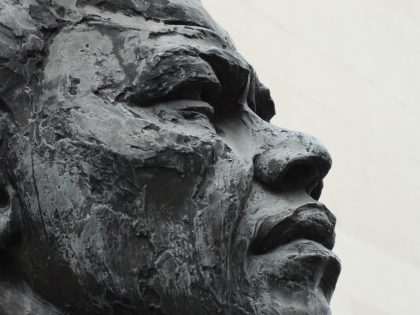
Ponte City
The 54-storey building in Johannesburg, built in the 1970s, is the tallest residential building on the continent, and subject of a new photobook.

The 54-storey building in Johannesburg, built in the 1970s, is the tallest residential building on the continent, and subject of a new photobook.

Between 2012 and 2013, an exercise took place known as the France South Africa Season. This bilateral initiative was aimed at strengthening relations between the two countries. In 2012 South Africa hosted France for a wide range of activities and vice versa in 2013. The activities took place in different areas of each country, covering […]

How South Africa's media report on the doings within the official parliamentary opposition, the Democratic Alliance.

The first African head of Greenpeace International, Kumi Naidoo, on how the world could best do justice to Mandela.

We send our Tokoloshe to battle with those trying to make us forget the atrocities of Marikana.

I wrote a long piece on Zola Mahobe, a Soweto businessman who died last December (two weeks after Nelson Mandela) and who is credited with transforming Mamelodi Sundowns. The team is currently one of the “big three” South African football clubs and is owned by Patrice Motsepe, the best example of a postapartheid oligarch: he […]

Apartheid's prisons tolerated 'National Geographic; For Nelson Mandela, who knew better, it was porn.
Because the (South Africa’s Truth and Reconciliation Commission) focused on perpetrators and overlooked the beneficiaries of mass violations of rights abuses – such as the pass laws and forced expulsions – it allowed the vast majority of white South Africans to go away thinking that they had little to do with these atrocities. Indeed, most did learn nothing new. The alternative would have been for the TRC to show white South Africans that no matter what their political views – whether they were for, against or indifferent to apartheid – they were all its beneficiaries, whether it was a matter of the residential areas where they lived, the jobs they held, the schools they went to, the taxes they did or did not pay, or the cheap labour they employed.

We have no illusions about Sandler having a responsibility to create smart cinema.

The Johannesburg-based crew challenges the status quo in South Africa with dance.
The face of Julius Malema’s Economic Freedom Fighters in South Africa is young-ish and black. Their “redistribute now” missive has earned both valid and lazy criticism. Their tone is perceived by many to be “dangerous” and “irrational”. For Ramphele, the red-beret clad young man from Rustenburg should have been less respectful towards her. For he is “young, angry and black”. The faceless trope deprives him of agency; he is driven by dangerous impulses and anger; he is one within an uncontrollable mass, predestined to produce instability. He is a threat. In a country that oscillates between the haze of Rainbow Nation-ism and the reality of economic exclusion – “young, angry and black” is a good scarecrow.

Herman Wasserman, at the site of the funeral of postapartheid South Africa's founder, Nelson Mandela, contemplates Mandela's legacy for his children.

The mainstream view is that the Netherlands was a staunch supporter of South Africa's liberation movement? The story is a bit more complicated.

For some of us, the official celebrations are missing a crucial element: Celebrating Nelson Mandela as a figure of armed struggle and the liberation movement.

Both Nelson Mandela’s historical role in the South African transition to democracy and his own management of his legacy paved the way for vacuous treatments of his life.

Are corporate entities really well intentioned in celebrating Mandela the freedom fighter or are they merely using these tributes to position their brands on the right side of history?

The African Activist Archive Project website contains posters from the African solidarity movement from the 1950s to the 1990s.

For the author, watching memorials for Mandela, South Africans have lost their ability to generate theater, the theater of the mass event.

At an event meant to celebrate Nelson Mandela's life, Jacob Zuma was not only embarrassed by the crowd (they booed him multiple times), by those on stage.

The Mandela who needs celebrating is the Mandela who, if he was not Lenin, never pretended to be something else.